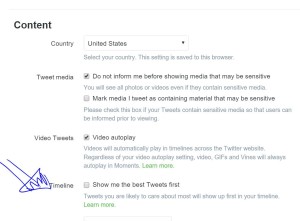It’s been a busy time for social media. Twitter is fundamentally shifting how people see tweets. Facebook wants you to like, love, laugh, be sad, or get mad. As for Snapchat? Brands are getting desperate for you to follow them there.
All of which means it’s time for a roundup of recent social media platform changes.
Twitter algorithms will shake up the stream.

It’s hard to “get” Twitter. Unless you are staring at a screen, you’re going to miss tweets as they stream by. Follow a handful of people, and it’s easy to see what your friends have to say. Expand out, and “power users” deploy searches and lists to catch the key stuff. New users just get frustrated — and abandon their accounts.
“Moments,” which just got its Australian debut, helps a little. I’ll occasionally look at a topic to see what Twitter’s doing there, but you first have to recognize that Twitter is curating tweets on hot topics before you click or scroll over to it.
To address its broader challenge, Twitter now has a “show me the best tweets first” option. I appreciate that it is optional, so I can continue to see my real-time stream. What I love about Twitter is that, unlike the algorithm-obsessed Facebook feed, it hasn’t force-decided (at least yet) what I want to see. I’m guessing new users will have the Twitter algorithms option checked by default.
What this means for you: Quality, however that’s defined, is going to start to matter more. Whether the Twitter algorithm is based on conversation, retweets, links, likes, or the type of content you respond to most is unclear. But change is here.
Prepare for more cat pictures.
Alright, I’m joking (sorta).
Twitter has added a GIF search option to its mobile app (and presumably, eventually, to its desktop version too). It’s an easy way to add a GIF to your tweet — which means we’re going to see a lot more bobbing heads and bad animation.
As you can tell, I have an ambivalent relationship with GIFs. An occasional well-placed GIF? Great. But a constant stream of them is a recipe for sensory overload. Which means use them, but use them judiciously as part of your visual arsenal.
Embeds will capture conversations.
I haven’t seen it yet, but Twitter is reportedly rolling out an embed conversation feature. While you’ve been able to grab a snippet of code and embed a tweet for a while, this will create a more robust option. Maybe you want to insert raves about your new product onto a Web page. Or perhaps you want to showcase feedback from a new video. Because the new feature is going to include multimedia (e.g., videos, photos) as well as text, it will offer a better way for you to capture a conversation that happens on Twitter and showcase it later.
In addition to helping you expand the conversation, this will also help Twitter extend its reach. This follows the addition of Twitter polls late last year, the elimination of the character limit in direct messages, and rumors that the tweet character limit might be raised from 140.
Facebook has debuted reactions.

Sometimes, “like” is just a bad option. You don’t want to “like” bad news, and it’s not a sufficient response when your friend announces that she’s received a promotion or gotten engaged.
Enter reactions, which lets you like, love, laugh, be sad, be mad, or say “wow.” (The “yey” ended up on Facebook’s cutting room floor.) This is the first time that “sentiment” is being factored into posts. This is either good news or a minefield of potential misery for companies as consumers get new options for reacting to what you’re saying. Looking for laughter? Now you’ll know if you hit the mark.
Facebook’s product design director, Geoff Teehan, penned a fascinating article on the evolution and design of Facebook’s new reactions.
For now, the company says that it isn’t going to provide separate metrics for the different reactions, but that feature is likely coming. Meanwhile, you have to think that different reactions could ultimately raise up or bury posts within the news feed.
Snapcodes are spreading.

My colleague Arik Hanson has a great post about why more brands aren’t using Snapchat. In it he points out:
We know big publisher brands like ESPN, Cosmo, and Nat Geo are seeing big impression numbers with the Discover feature. But, you think Snapchat is just going to turn that kind of functionality over to brands right now? Think again. Snapchat seems finely keyed in to the user experience right now – much like Facebook was 4-5 years ago. Advertising and promotion options will come – but right now, they’re either very expensive or just don’t exist for most companies.
In other words, it’s almost impossible to find a brand on the platform. It’s one of the reasons that, although I’ve played with Snapchat a little, I don’t really use it.
However, every user has a “snapcode” (see mine above) — a sort of QR code for friends to find you on the platform. Now some companies are turning their Twitter avatars into these Snapchat ghosts in an effort to build an audience. It makes sense that they’re doing it; it’s silly (and Snapchat’s fault) that they have to.
And if you start to see a bunch of very yellow avatars, you’ll know why.
What social media changes are you most excited about?
Feature photo by Anton Dieter (Flickr); GIF (Giphy).



